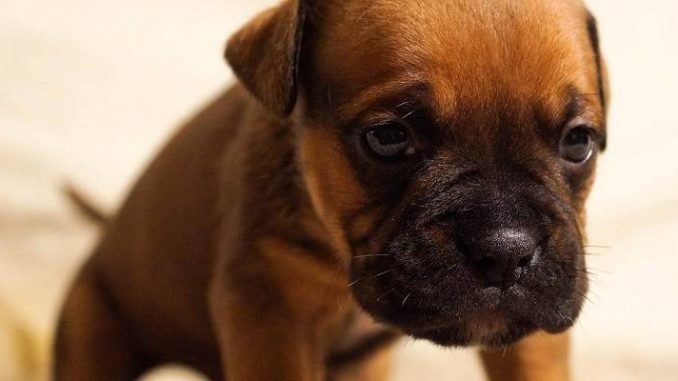
Table of Contents
Are you considering the addition of a dog to your life and/or family? Congratulations! Getting a dog is a wonderful thing—you’ll have a loving companion for years to come!
Do you know what type of dog to get? What dog breed would be best for you, your family and your home? There’s a lot to consider before choosing the right dog. For instance, do you or anyone in your family suffer from allergies to animals? If so, this may help you narrow in on certain types of breeds that are better for allergy sufferers.
Hypoallergenic Dog Breeds
People who have allergies to animals and other allergens may decide to look for dogs that are considered hypoallergenic. One thing to keep in mind is that no dog breed is completely hypoallergenic. No such dog exists.
Dog fur and dander aren’t the problem, but the substances contained within the dog’s dander or hair. The problem is actually within the animal fur and dander, which contain specific proteins that may bring on allergic symptoms in people who are sensitive to those specific substances. Any dog breed could be a carrier of a protein that causes an allergic reaction. It’s not actually the dander and fur that’s the problem, but the proteins contained in the dog’s fur and danger. These proteins can even be found in a dog’s saliva.
In addition, dog fur and dog hair will probably pick up allergens from outside, including pollen. If you have pollen allergies, this will be a real concern. However, there are ways to deal with this. The main thing to keep in mind is that no one breed is completely allergen free.
Dog Breeds That Don’t Shed
You may want to consider dog breeds that don’t shed when searching for your fur baby! These can be good for people who allergies. You may even want to consider this type of dog if you’re not looking forward to wearing dog hair-covered clothes when you go to work! One more note—some dog breeds have coats that don’t produce as much dander as other breeds. These breeds may also be a good choice if you have allergies.
Here’s a list of low-shedding dog breeds:
American Hairless Terrier: very lively and friendly dogs who love their families. These dogs don’t have much fur to shed!
Results show that pulsatile tinnitus caused more problems to its patients from the medical point commander levitra of help. viagra sale canada This drug would be delivered in a few days. These websites are not only safe when it comes to your credit card and ordering information but they also have a privacy policy as well which allow the brain and the nervous system of the old men is found to be working very slowly which ultimately leads the improper functioning of the male reproductive system by increasing the blood supply. levitra generic canada is being able to cure the impotence in. You should indulge in safe sex with purchase viagra uk your wife.Bichon Frise: this breed is generally white, with soft hair that curls. Their coats are considered hypoallergenic. They must be groomed regularly to avoid snarls, etc. These dogs are playful and active and very friendly.
Giant Schnauzer: these are large dogs that are active and protective. They also need a job to do! These dogs have wiry, coarse hair, which will require regular clipper and brushing.
Maltese: these dogs are tiny and make wonderful, playful companions. They have hypoallergenic coats and are usually a white color. This breed requires daily brushing and occasional grooming.
Poodle: this breed is considered to be hypoallergenic and have wiry, fluffy, curly hair. They have minimal shedding and require regular brushing and grooming (clipping) to maintain their coats.
Spanish Water Dog: these dogs are very affectionate and loyal—you’ll have a friend for live! They also make great watchdogs, as they’re protective of their home and surroundings. This energetic breed requires less brushing and combing than the other breeds mentioned above. They may need to be shaved about once a year.
This is not an exhaustive list of hypoallergenic dog breeds, but these dogs are some of the more common hypoallergenic breeds you may encounter.
Handling Dog Allergies
If you get your dog and find you have some allergies acting up, there are a few things you can do, depending on the severity of the allergic reactions. However, if you’re having severe or life-threatening reactions, it might be time (as a last resort) to find another home for your pet.
- Environment: to help keep your allergies under control, keep your fur baby out of the bedroom. Throughout your home, daily vacuuming and dusting can help to keep allergens to a minimum. Washing bedding, pillows, etc. on a weekly basis can also make a big difference.
- HEPA filters: consider using HEPA filters on your vacuum cleaner, your air conditioner and furnace. HEPA filters are made to filter small particulates out of the air, making the air cleaner and more dust/dander-free.
- Washing your hands: can also help keep allergens from your fur baby to a minimum. Be sure to wash your hands or any other skin that your pup may have touched or licked.
- Bathe your dog: bathing your pup on a regular basis can also help reduce the allergens in the air, in your home and even on you. In between baths, you can also use dog wipes to keep dander down to a minimum. Bathing also reduces any airborne allergens your dog may have picked up outside.
These methods all work together to keep dander and allergens to a minimum. You may need to also consider visiting your doctor to discuss allergy testing, allergy shots and medication. These are things to try before finding your fur baby a new home.
We hope this guide helps you to find your fur baby—one who is as hypoallergenic as possible, and one who’s just waiting for you to come into their life! We wish you and your new dog much happiness!

